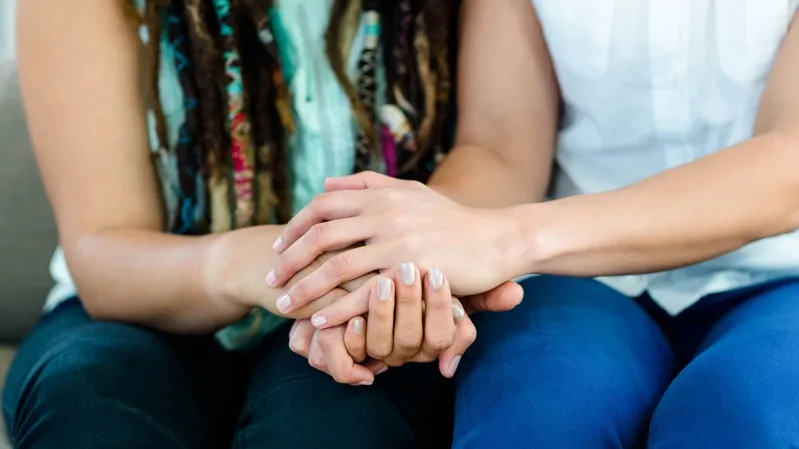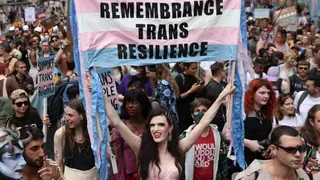August 19, 2020
LGBTQ Conversion Therapy in India: Why Does It Still Persist?
READ TIME: 4 MIN.
Rianna Price, Lancaster University
India is facing a prolonged backlash from its LGBTQ community over the continued use of conversion therapies to "cure" homosexuality by changing people's sexual orientation. In May, the tragic suicide of Anjana Harish, a 21-year-old bisexual woman in Goa, sparked online protests. Harish had posted a video online before her suicide describing how she had been subjected to conversion therapy by her family in her home state of Kerala. Her death revitalized efforts by activists to call for an outright ban on the practice.
In June, the UN Human Rights Council received a report on conversion therapy by an independent expert on gender and sexuality, Victor Madrigal-Borloz. Based on research in over 100 countries that use conversion therapy, 8,000 respondents who had endured it were interviewed, with 98% reporting that it had caused them psychological or physical damage.
Despite this, the UN Human Rights Council has yet to officially support Madrigal-Borloz's call for a global ban on conversion therapy for minors. Currently, only five countries have a ban in place: Malta, Brazil, Taiwan, Ecuador and Germany.
Homosexuality in India was criminalized under colonial-era legislation in 1861. This law was repealed in 2018, after which the Indian Psychiatric Society stated unequivocally that homosexuality was not a mental disorder. However, divisions exist within the medical community.
After Harish's death, the Kerala branch of the society released a statement arguing that "any attempt to treat a person to change sexual orientation or gender identity is unjustifiable and illegal". But some practitioners, even in Kerala, still consider homosexual desire to be a perversion that can be medically corrected.
The ease of access in finding professionals who practice conversion therapy on LGBTQ+ people has become a cause for concern. In early June, two apps which help people find medical clinics and treatments removed pages allowing users to look for "sexual orientation counseling" after a viral Twitter campaign.
Imported by the British
In the west, the history of psychiatric understandings of homosexuality hinged on the notion that deviant sexuality was something which could, and should, be changed. The idea of homosexuality as a disorder that could be "treated" was then imported to various European colonies via medical, legal and sociological institutions from the 19th century onwards.
The conversion therapies that persist today grew out of a set of aversion techniques that were developed by psychiatrists. These aversion techniques – in which people are pushed to associate a behavior with discomfort – were initially used for alcoholism and other addictive and destructive behaviors. But from the 1950s through to the 1980s they began to be used globally on people with same-sex attraction as a form of conversion therapy.
In India, the earliest documented medical use of aversion techniques were in the 1970s, following a renewed global interest in scientific cures for homosexuality, and was reported in the Indian Journal of Psychiatry. In the same period, some Indian medical professionals noted that their subjects "showed a desire to develop heterosexual behavior", as they were "much concerned about their future marital life".
In my ongoing research on this period, I'm looking at how the expression of homosexual desire, private inclination and public propriety collided in India – and how the pressure of social tradition and familial duty to marry and procreate overruled same-sex desire for those who sought treatment.
The emphasis on traditional marriage remains a critical factor in the continuation of conversion therapies in India. In Indian post-colonial society, heterosexuality is often portrayed as the only acceptable form of sexual desire, despite long traditions of same-sex eroticism.
Aversion therapy
When aversion therapy was introduced in India, it involved using electro-convulsive therapy as well as a program of behavioral therapy to remove fear or anxiety of the opposite sex. Patients would attend sessions with a range of erotic or pornographic same-sex photographs they had chosen themselves. While viewing them, they would receive an electric shock, creating a negative association of pain with their own feelings of arousal.
The photographs would then be replaced with a heterosexual image and the electric shock would subside, assigning a sense of relief to opposite-sex attraction. While visual aids were the primary stimuli, Indian practitioners also included sensory materials, such as women's perfume, to elicit stronger positive relations with opposite-sex stimuli. Women's perfumes are still being used today according to recent accounts of conversion therapy.
While their western counterparts in the 1970s and 1980s primarily used a combination aversive techniques with some behavioral therapy alongside, Indian practitioners relied more heavily on a set of "additional behavioral programs" to develop "social skills" which would help patients navigate their new-found heterosexuality. The main point for western practitioners was the eradication of same-sex desires, whereas in India they wanted to redirect the sexuality and make it heterosexual and capable of procreation.
Male patients underwent therapy for "passivity", while female patients were encouraged to become more feminine through clothing choice. This practice reflected binary ideas of sex and gender which arose via colonial intervention, as pre-colonial India had long accepted the existence of the hijra or a "third gender".
The law which criminalized homosexuality in India was a colonial imposition. Homophobic narratives and those which try to medicalize same-sex attraction can also be traced back to colonial ideology. Yet some powerful post-colonial institutions and individuals adopted these narratives and incorporated them into an anti-LGBTQ+ agenda, which continues among some practitioners today.![]()
Rianna Price, PhD Candidate in History, Lancaster University
This article is republished from The Conversation under a Creative Commons license. Read the original article.






